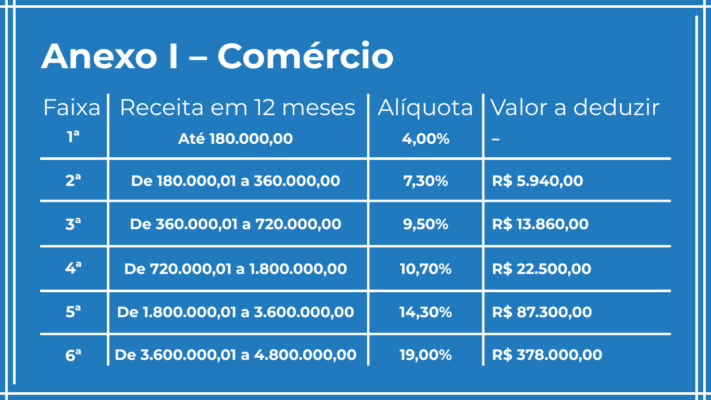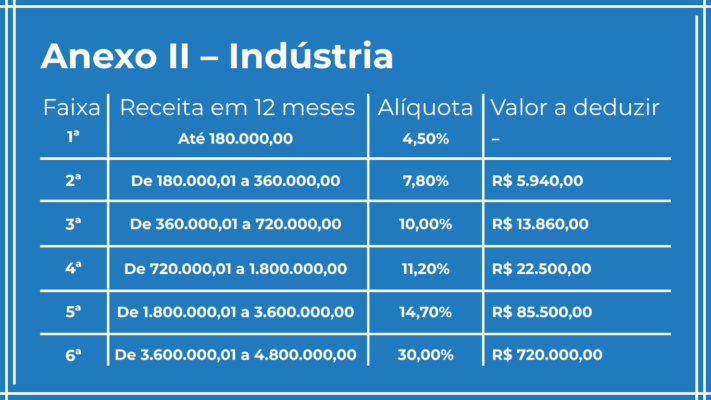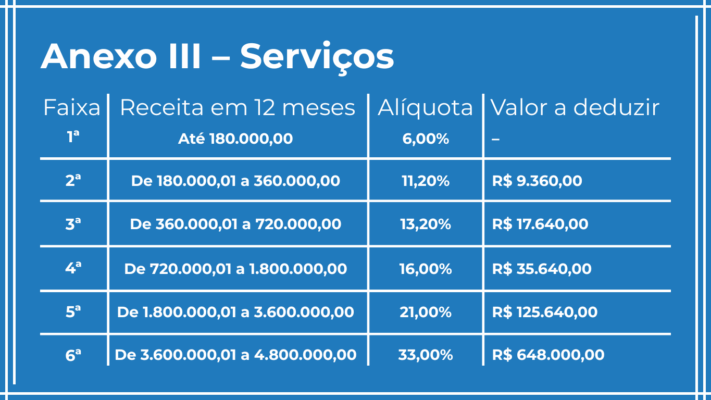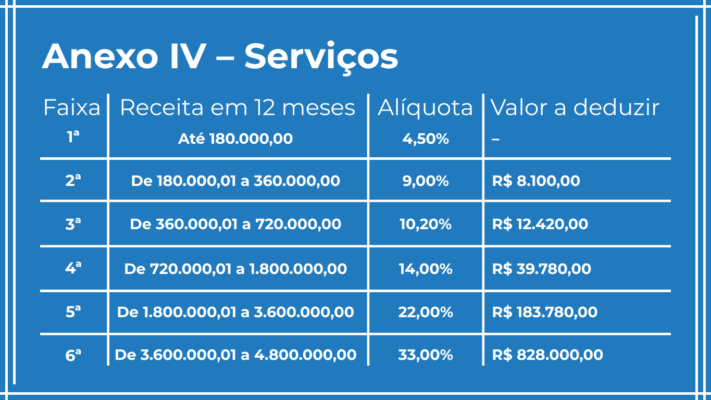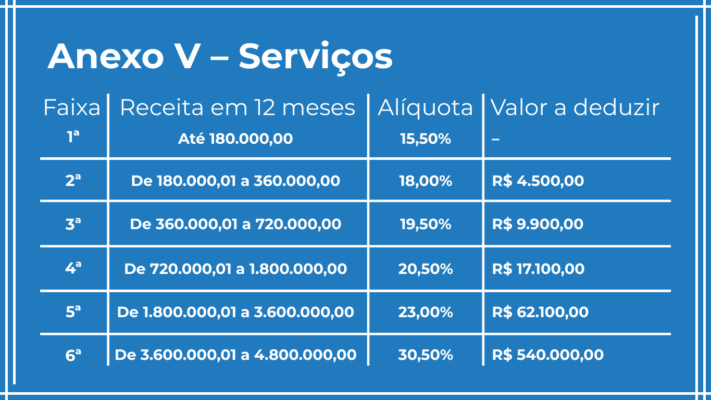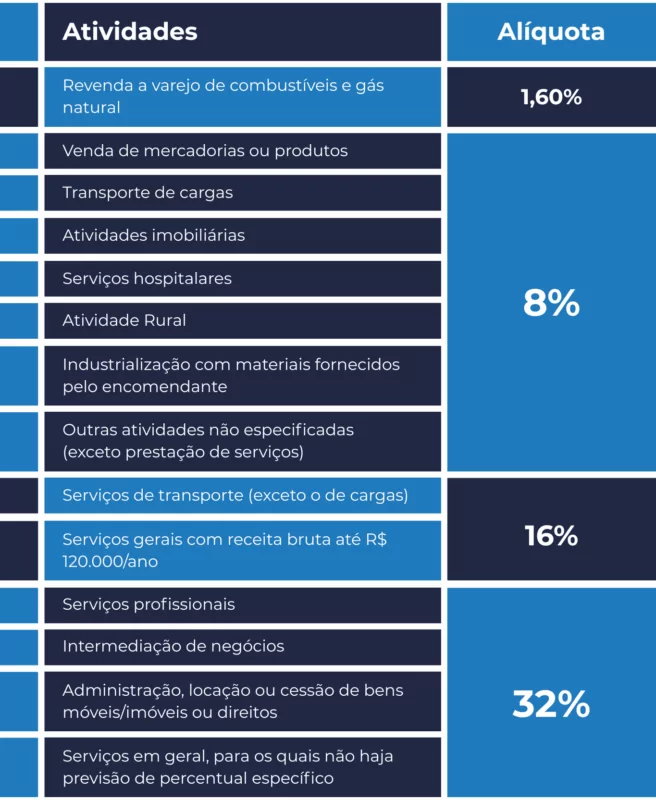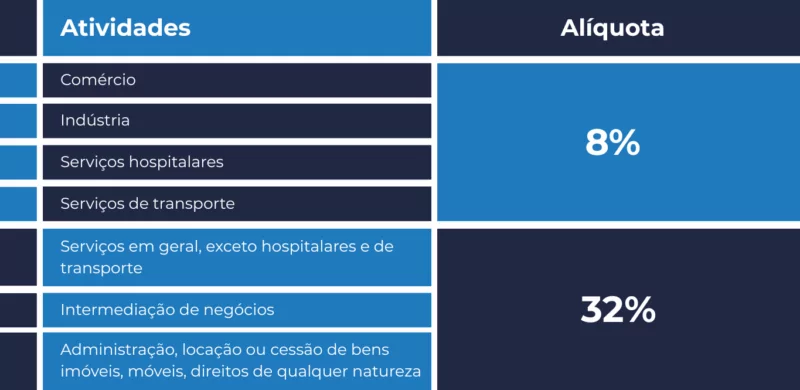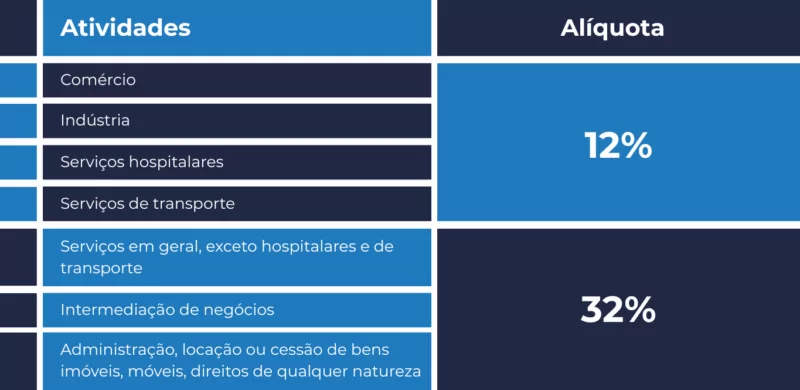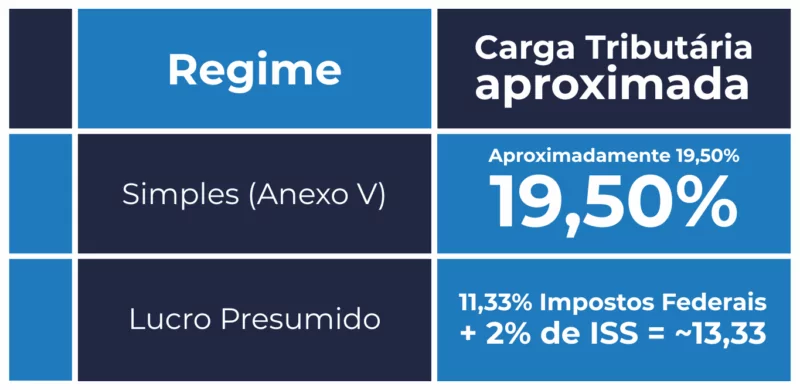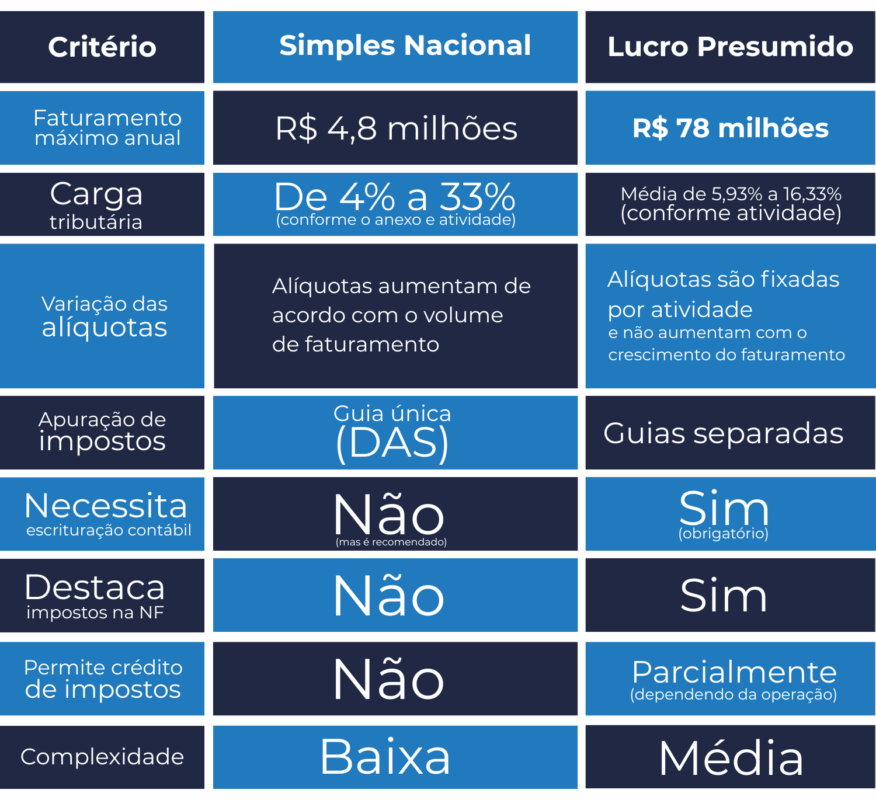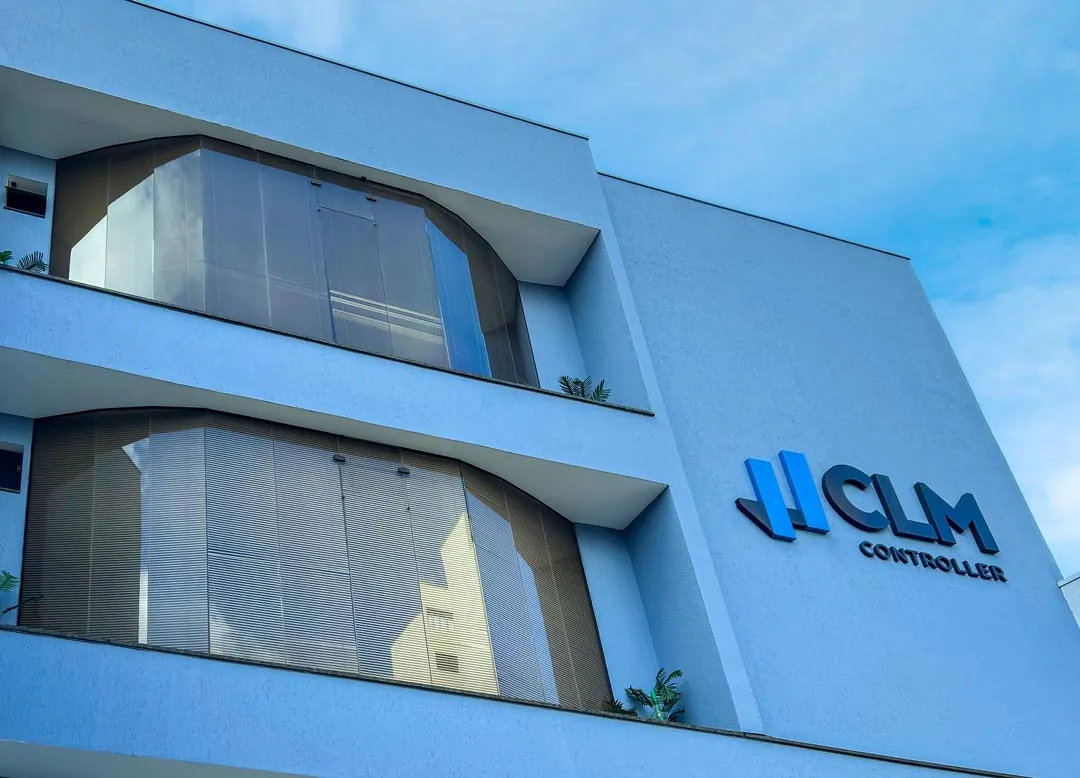When to migrate from Simples Nacional to Lucro Presumido? This is a recurring question among entrepreneurs who are seeing their company grow and taxes increase month after month. What many don't know is that changing tax regimes can be the key to reducing the tax burden and improving business results.
In this article, we'll show you in detail how Simples Nacional and Lucro Presumido workwhich criteria for moving from one system to anotherand we will also present practical examples and comparisons to help you make the best decision.
In addition, at the end you will understand the tax migration step by step and why having the support of a specialized accounting consultancy makes all the difference in this process.
"It is compulsory to migrate from Simples Nacional to another regime when you exceed R$ 4.8 million, but it can be advantageous to change before then."
- Companies are obliged to leave Simples when they exceed R$ 4.8 million in annual turnover.
- However, in some cases, it's worth leaving first - especially when the Simples rates get too high or the activity proves more advantageous in another regime.
Next, we'll understand how the regimes work and then show you what signs indicate that it's time to switch to Presumed Profit.
How does Simples Nacional work?
O Simples Nacional is a tax regime that was established by the Complementary Law 123/2006with the aim of simplifying taxation for companies with an annual turnover of up to R$ 4.8 million.
Under this regime, the following taxes can be unified in a monthly bill, the amount of which is calculated on the turnover of the business:
- IRPJ - Corporate Income Tax;
- CSLL - Social Contribution on Net Profit;
- COFINS - Contribution to the Financing of Social Security;
- PIS - Social Integration Program;
- IPI - Tax on Industrialized Products;
- ICMS - Tax on the Circulation of Goods;
- ISS - Tax on Services;
- CPP - Employer's Social Security Contribution.
The Simples Nacional rates are distributed in 5 annexes, and it is necessary to look at the company's type of activity in order to determine which annex it falls into.
How does Simples Nacional work?
O Simples Nacional is a tax regime that was established by the Complementary Law 123/2006with the aim of simplifying taxation for companies with an annual turnover of up to R$ 4.8 million.
Under this regime, the following taxes can be unified in a monthly bill, the amount of which is calculated on the turnover of the business:
- IRPJ - Corporate Income Tax;
- CSLL - Social Contribution on Net Profit;
- COFINS - Contribution to the Financing of Social Security;
- PIS - Social Integration Program;
- IPI - Tax on Industrialized Products;
- ICMS - Tax on the Circulation of Goods;
- ISS - Tax on Services;
- CPP - Employer's Social Security Contribution.
The Simples Nacional rates are distributed in 5 annexes, and it is necessary to look at the company's type of activity in order to determine which annex it falls into.
Annex I - Trade
Annex II - Industry
Annex III - Services
Annex IV - Services
Annex V - Services
That said, we need to clarify that considering the values in the "Deductible amount"The maximum effective Simples Nacional tax rate is 19.50% on monthly turnover.
How does Presumed Profit work?

In turn, the Presumed Profit is a tax regime that can be used by companies with annual turnover of up to R$ 78 million.
In this system, taxes are not paid in a single monthly bill. Therefore, each of them has its own rates. Check them out:
IRPJ
In Presumed Profitwe need to multiply one of the rates below by the 15% rate of IRPJto arrive at the percentage that will be applied to turnover to calculate the tax due.
Thus, a company that sells goods will pay 8% x 15% = 1.20% of IRPJ on turnover.
CSLL
In turn, to calculate the CSLLIn order to calculate the tax due, we need to multiply one of the rates below by the 9% rate, and only then arrive at the percentage that will be applied to the turnover to calculate the tax due.
Therefore, a company that sells goods will pay 12% x 9% = 1.08% of CSLL on turnover.
PIS and COFINS
In the case of PIS and COFINS, we must use the following calculation rates on turnover:
- PIS: 0.65% on turnover;
- COFINS: 3% on turnover.
ICMS and ISS
Finally, ICMS and ISS are calculated on the basis of the rates and what the state legislation (in the case of ICMS) and municipal legislation (in the case of ISS).
Having made this comparison, the question remains: when should you migrate from Simples Nacional to Lucro Presumido? The answer is in the next article.
Find out more about our Tax Consulting services
How does Presumed Profit work?

In turn, the Presumed Profit is a tax regime that can be used by companies with annual turnover of up to R$ 78 million.
In this system, taxes are not paid in a single monthly bill. Therefore, each of them has its own rates. Check them out:
IRPJ
In Presumed Profitwe need to multiply one of the rates below by the 15% rate of IRPJto arrive at the percentage that will be applied to turnover to calculate the tax due.
Thus, a company that sells goods will pay 8% x 15% = 1.20% of IRPJ on turnover.
CSLL
In turn, to calculate the CSLLIn order to calculate the tax due, we need to multiply one of the rates below by the 9% rate, and only then arrive at the percentage that will be applied to the turnover to calculate the tax due.
Therefore, a company that sells goods will pay 12% x 9% = 1.08% of CSLL on turnover.
PIS and COFINS
In the case of PIS and COFINS, we must use the following calculation rates on turnover:
- PIS: 0.65% on turnover;
- COFINS: 3% on turnover.
ICMS and ISS
Finally, ICMS and ISS are calculated on the basis of the rates and what the state legislation (in the case of ICMS) and municipal legislation (in the case of ISS).
Having made this comparison, the question remains: when should you migrate from Simples Nacional to Lucro Presumido? The answer is in the next article.
Find out more about our Tax Consulting services
When to migrate from Simples Nacional to Lucro Presumido?
Now that you know the regimes, let's get down to business the main signs that it's time to switch from Simples to Lucro Presumido.
1. Turnover close to the Simples ceiling
The R$ 4.8 million per year is non-negotiable. If you exceed it, the company will be excluded from Simples the following year.
But even coming close to R$ 3.6 million annuallyThe rate is already close to 20% to 30%, making the regime less advantageous.
If your company is projecting growth in the coming months, it's worth doing the simulation now and considering migrating before it's compulsory.
2. High profit margin
The higher your profit, the more the Presumed Profit becomes attractiveThis is because in Simples Nacional, taxes are calculated based on turnover, which ends up being unfair because it erodes profit.
Here's a comparative example, simplified to make it easier to understand:
Service company (R$ 100 thousand/month):
Difference: Up to 6.17% percentage points of savings - which represents more than R$ 6,000/month in less taxes!
3. Activities not properly included in Simples
Some companies in the service sector, for example, often end up falling automatically into the Annex Vwhich has the highest rates, reaching up to 33%, among them:
- Advertising agencies
- Consulting
- Technology companies and startups
In view of this, Presumed Profit can offer a much lower tax burden, as well as offering greater predictability.
4. Need to highlight taxes and generate tax credits
Simples Nacional, taxes are not highlighted on the invoice, which prevents your customers from taking advantage of credits.
- This can make B2B sales to large companies impossible.
- It also makes it difficult to recovery of ICMS or PIS/COFINS credits on inputsespecially for importers or manufacturers.
In Presumed Profit, this is possible, and your company becomes more competitive.
5. Planning for growth, investment or sale of the company
Companies in Simples have restrictions on activity, members and structure.
If you're thinking of:
- Attracting investors
- Expand to other cities
- Buying new companies
- Participate in larger tenders
It's time to professionalize your accounting and migrate to a system such as Presumed Profit or even Real Profit.
6. Other important points to consider
In addition to the tax factors, the migration to Presumed Profit may represent an important milestone in the company's development. evolution of business management.
By requiring complete bookkeeping, this change forces entrepreneurs to adopt more organized practices, with greater financial control, analysis of results and a strategic vision of the business.
In practice, this facilitates decision-making, improves governance and contributes to the company's sustainable growth.
Another important point is access to credit lines and financingBanks and financial institutions tend to look favorably on companies that present complete balance sheets and consistent financial reports.
This is because Presumed Profit offers a more solid base of information for credit analysis, which can result in more attractive rates and higher limits.
Companies wishing to participate in import/export operations or sign contracts with large corporations also benefit from this change.
Highlighting taxes on invoices and a robust accounting structure are often requirements in formal contracting processes.
Practical comparison: Simples Nacional vs. Lucro Presumido
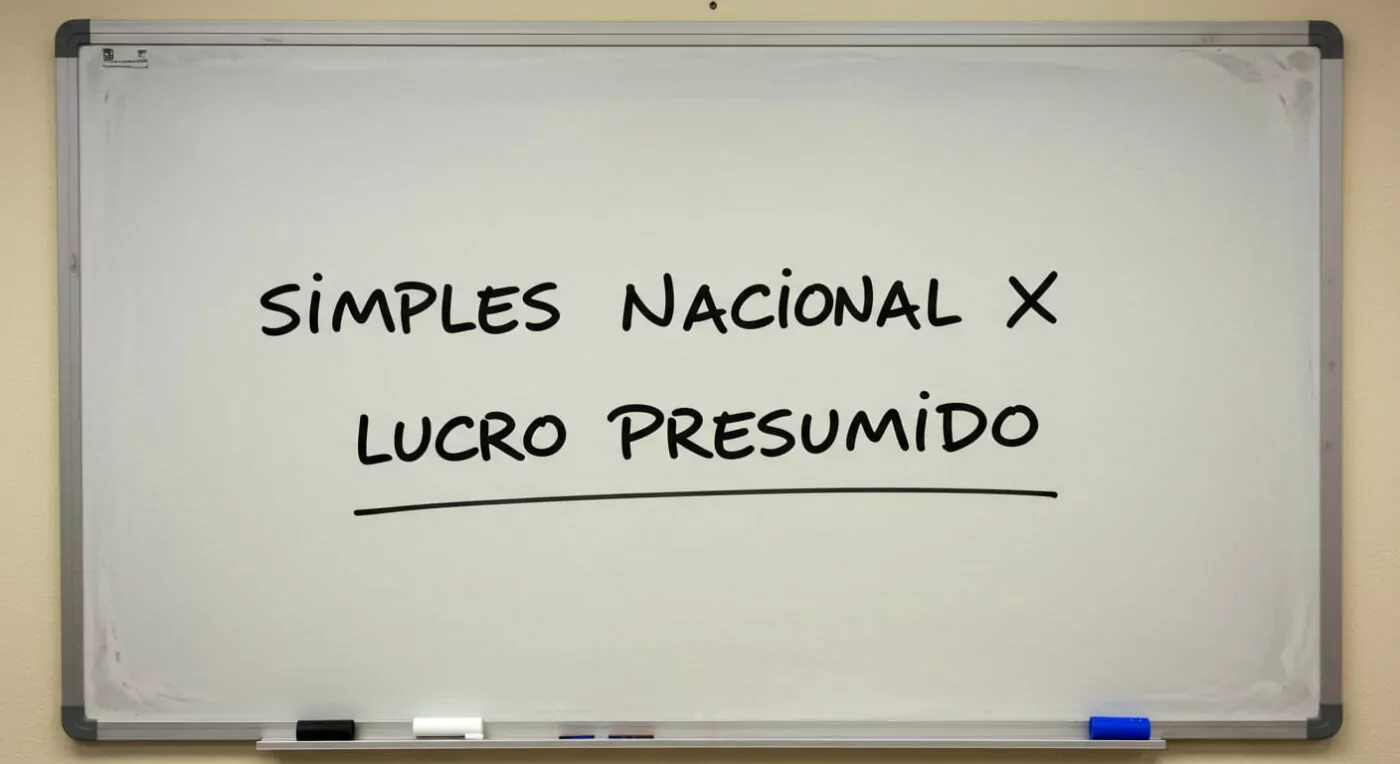
How to migrate from Simples Nacional to Lucro Presumido?
When the strategic decision to change regime has been made, a new doubt arises: how to migrate from Simples Nacional to Lucro Presumido safely, without compromising the company's financial and fiscal health?
The transition can only take place at the beginning of the calendar yearwhere until the last working day of January the deadline for requesting to opt out of Simples Nacional and join Lucro Presumido.
Planning is therefore essential in the last quarter of the previous yearwith simulations, document organization and appropriate technical support.
See below for a complete step-by-step guide to making the move safely:
1. Carry out a detailed tax analysis
The first step is to understand whether the switch really makes sense for your company. That's why it's essential to compare the effective tax burden of Simples Nacional with that of Lucro Presumidoconsidering:
- Monthly and annual turnover
- Operation profit margin
- Type of activity
- Incidence of taxes such as ICMS or ISS
- Whether or not tax credits can be used
Realistic simulations based on actual company data are indispensable. With this in mind, specialized accountants can use advanced tools and spreadsheets to calculate the monthly and annual tax in both regimes, enabling a technically based decision.
2. Request removal from Simples Nacional
Having confirmed that migrating to Presumed Profit is advantageous, it's time to formalize the disqualification from Simples Nacional. This process must be done:
- Through the Simples Nacional portalaccessing with the company's digital certificate
- Until the last working day of January of the calendar year in which it wishes to adopt the new regime
- With the knowledge that, once done, the disqualification is irreversible for that year
What's more, whether the company issues invoices with state or municipal registrationyou will also need notify the local tax authorities (SEFAZ and Prefeitura) on the change of tax regime.
3. Adapt the company's accounting
Simples Nacional allows simplified bookkeeping, but when you migrate to Lucro Presumido, your company is now obliged to keeping more robust accountswith the following measures:
- Adopting a chart of accounts compatible with tax requirements
- Complete bookkeepingincluding the Daily Book and the General Ledger
- Recording and organizing the company's tax and financial documents
- Correct calculation of IRPJ and CSLL based on legal presumptions
- Elaboration of periodic balance sheets and DREs (Statement of Income for the Year)
This process requires greater integration between company sectors (sales, finance and accounting), as well as an accountant or accounting firm with experience in more complex schemes.
4. Update systems and invoice issuers
In Presumed Profit, taxes are not unified in a single form (DAS). For this reason, invoice issuing systems need to be adjusted to highlight separately PIS, COFINS, ISS, ICMS and other taxesaccording to the activity carried out and the percentages due.
What's more:
- For some activities, ISS must be broken down by municipality
- The company may need to configure different CFOPs (Tax Codes for Transactions and Services)
- Specific tax files need to be generated, such as SPED Contributions and EFD ICMS/IPI
If the system is not configured correctly, there is a risk of inconsistent information in tax returnsThis can lead to assessments, fines and problems in relations with clients who depend on the note for tax credit.
5. Establish a routine for continuous accounting monitoring
Unlike Simples, where monthly calculation is relatively simple, Lucro Presumido requires greater control over accessory obligationssuch as:
- DCTF (Declaration of Federal Tax Debts and Credits)
- EFD Contributions (PIS and COFINS Sped)
- EFD ICMS/IPI (for companies with state registration)
- DEFIS and DIRF (where applicable)
- Correct and punctual issuance of separate guides: IRPJ, CSLL, PIS, COFINS, ISS, ICMS
It is essential to have experienced accounting adviceIt also offers ongoing consultancy, avoiding errors and identifying opportunities for legal tax savings.
Attention: poorly planned migration can cause serious damage
- Fines for retroactive disqualification
- Loss of municipal or state tax benefits
- Operational difficulties due to lack of adaptation of systems
- Inconsistencies between accounting, invoices and declarations
That's why, don't make this decision alone: seek the support of experts to ensure a smooth and safe transition.
Advantages and disadvantages of migration
If you're in doubt about whether or not to migrate from Simples Nacional to Lucro Presumido, it's worth analyzing the pros and cons based on your company's reality:
Advantages of Presumed Profit
- Reducing the tax burden for companies with a high profit margin
- Highlighting taxes on the invoiceallowing the customer to use credits
- Use of ICMS, PIS and COFINS credits in cases of import or purchase of taxed inputs
- More acceptance in the B2B marketespecially when a tax invoice is required
- More structured accounting, which facilitates financial analysis and planning for expansion or fundraising.
Disadvantages of Presumed Profit
- Greater accounting and tax complexityrequiring ongoing technical support
- More accessory obligations monthly and quarterly
- Need for complete and accurate bookkeeping
- Less flexibility for companies with low profit marginswho can pay more tax on the Presumed
Comparative table: Simples Nacional x Lucro Presumido
Conclusion
Understanding When to migrate from Simples Nacional to Lucro Presumido? is essential for companies that are growing, seeking greater tax savings or preparing to expand in a structured way.
The choice of tax regime has a direct impact on business profits, management and competitiveness.
If you realize that your business:
- It's already close to the Simples ceiling,
- You're paying very high tax rates;
- It caters for companies that require a tax invoice;
- It is losing competitiveness and profit margins due to high taxes.
Maybe it's the right time to consider tax planning, with a view to migrating from Simples Nacional to Lucro Presumido as soon as possible.
🚀 Still in doubt about the best tax regime for your company?
Talk to CLM Controller and receive a personalized analysis to pay less tax legally


